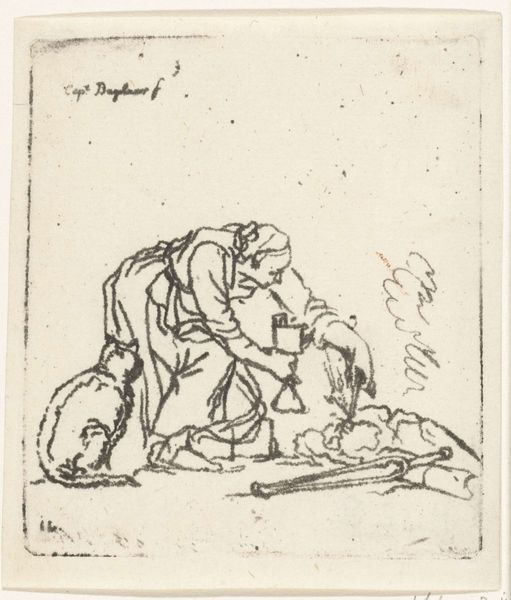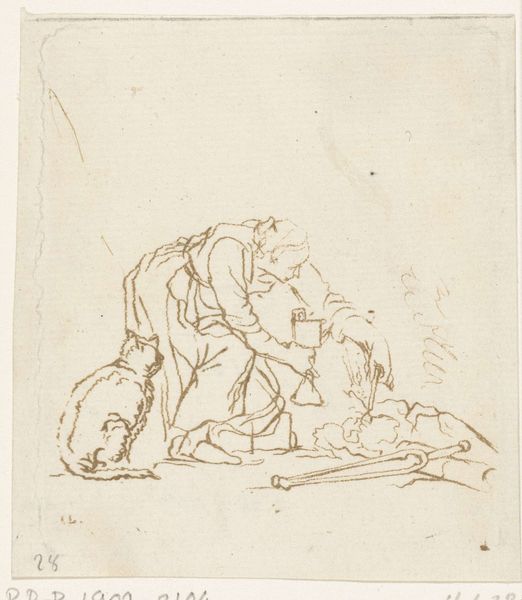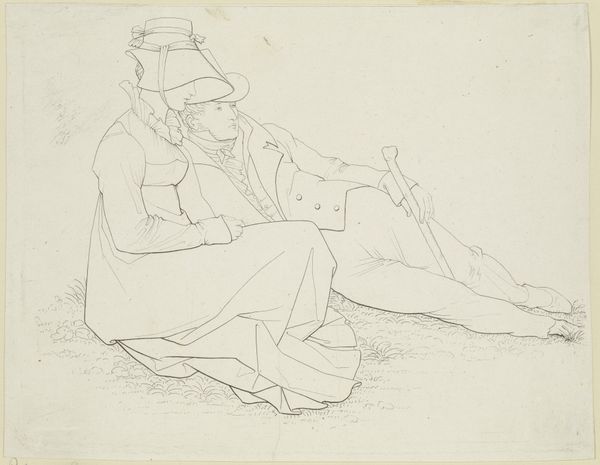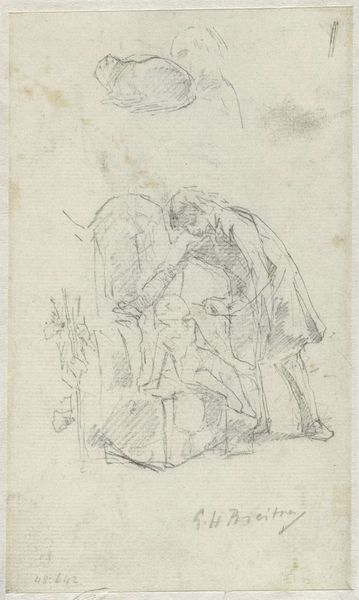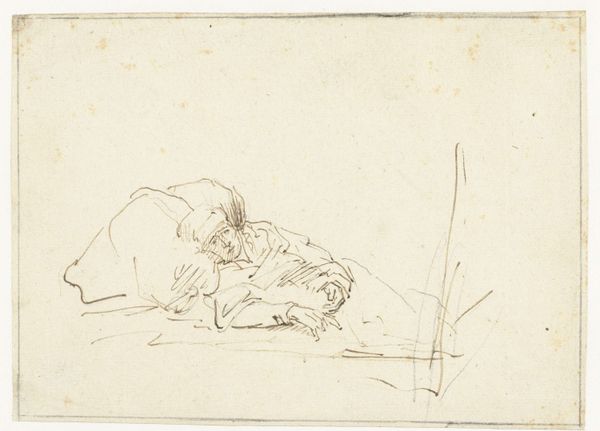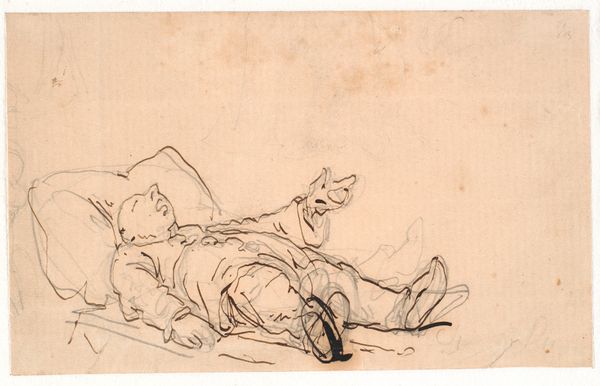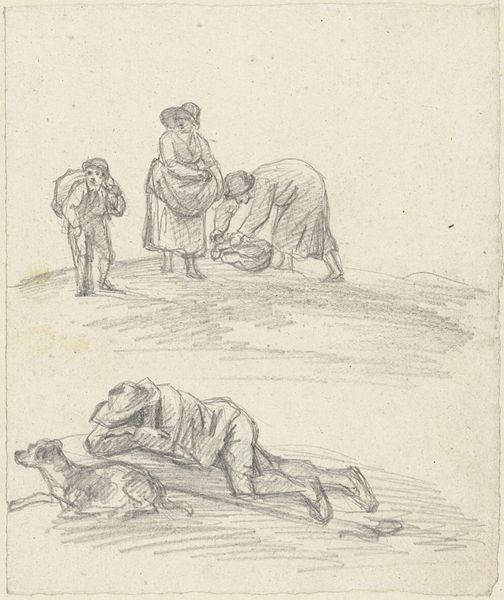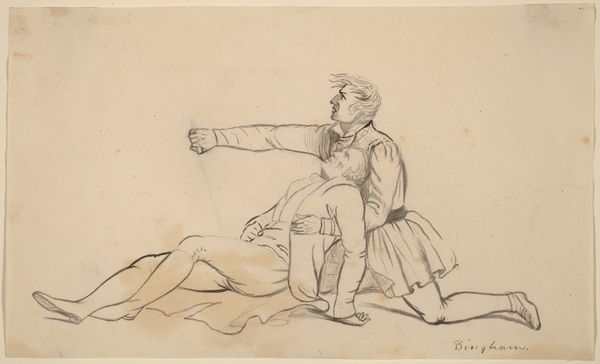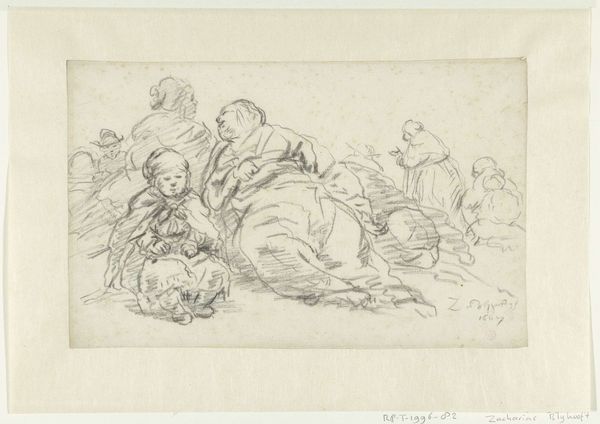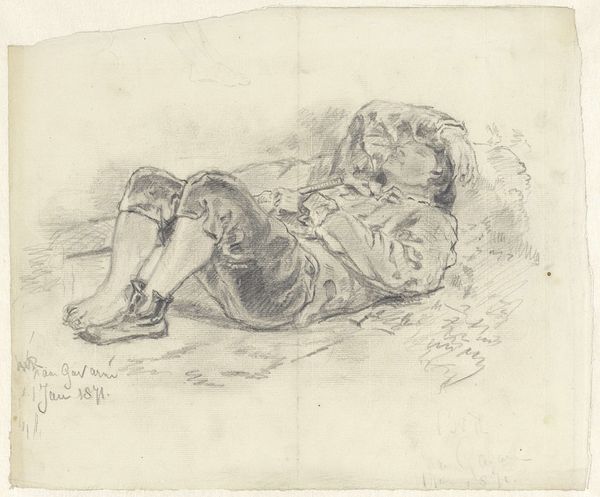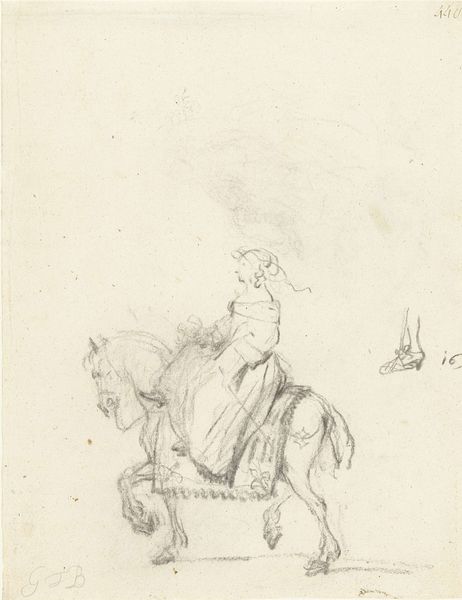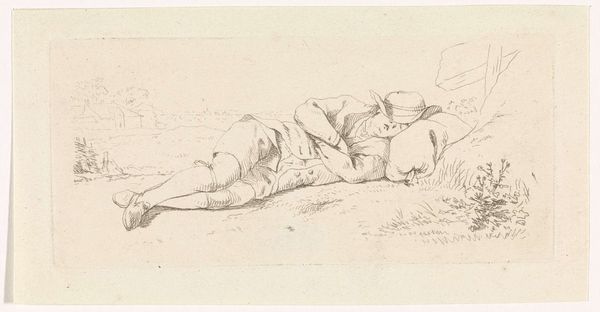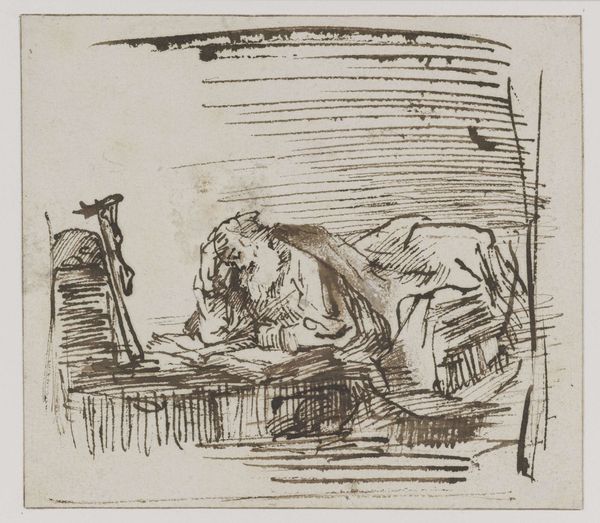
drawing, ink, pen
#
portrait
#
drawing
#
comic strip sketch
#
imaginative character sketch
#
personal sketchbook
#
ink
#
idea generation sketch
#
sketchwork
#
ink drawing experimentation
#
romanticism
#
pen-ink sketch
#
sketchbook drawing
#
pen
#
genre-painting
#
storyboard and sketchbook work
#
initial sketch
Dimensions: height 85 mm, width 73 mm
Copyright: Rijks Museum: Open Domain
Editor: This ink drawing, "Vrouw met zwavelstok en lamp" – "Woman with match and lamp" – by Ernst Willem Jan Bagelaar, created sometime between 1798 and 1837, depicts a woman lighting something on the ground, with a cat observing her. I'm struck by the immediacy of the sketch and the vulnerability of the woman depicted. How do you read this work? Curator: This seemingly simple sketch opens a window into the social realities of the late 18th and early 19th centuries. We see a woman engaged in a menial task, perhaps struggling to make a living. The inclusion of the cat hints at the intimacy of her domestic space, but also possibly her isolation. The era saw significant social upheaval; can we view this as a commentary on the lives of marginalized women during a period of immense change, struggling with the very basics of survival? Editor: That's fascinating. I hadn't considered it in the context of broader social change. The woman's focus on the task at hand seemed more personal to me. Do you think the artist intended to make a political statement, or was he simply capturing a scene from everyday life? Curator: It's a vital question. The lines between observation and social commentary were often blurred during this period. Even if not overtly political, the very act of depicting a woman engaged in such labor elevates her experience. Think about the art historical context - who were the subjects typically deemed worthy of artistic representation? Depicting everyday struggles can become a powerful form of activism. The question becomes, does it humanize a marginalized figure, and what does it ask of the viewer? Editor: So, by simply portraying this woman, Bagelaar might be challenging societal norms. That shifts my understanding quite a bit. Curator: Precisely! This seemingly simple genre scene, through a contemporary lens, challenges us to consider representation, class, and the narratives we build around historical figures. Editor: I will never look at "genre painting" the same way again! Thanks for showing me what to look for, and how historical context can shed new light on artwork. Curator: My pleasure! Keep asking those questions; they are the key to unlocking art's deeper meanings.
Comments
No comments
Be the first to comment and join the conversation on the ultimate creative platform.
